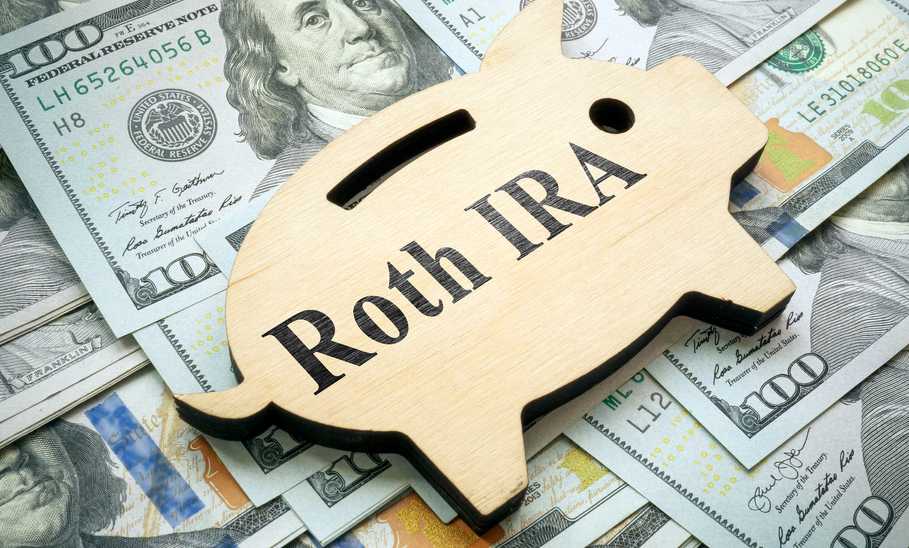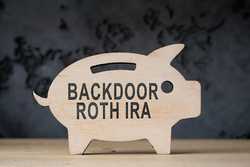- Tax-free investment growth
- No tax or penalty to withdraw contributions
- Withdrawals in retirement are tax-free
- No required minimum distributions (RMDs) during owner’s lifetime
What is a Roth IRA?

Our evaluations and opinions are not influenced by our advertising relationships, but we may earn a commission from our partners’ links. This content is created by TIME Stamped, under TIME’s direction and produced in accordance with TIME’s editorial guidelines and overseen by TIME’s editorial staff. Learn more about it.
A Roth IRA is a powerful way to save for retirement with tax-free growth, tax-free withdrawals during retirement, and no required minimum distributions (RMDs) during your lifetime.
Traditional individual retirement accounts, or IRAs, were introduced in 1974 by the Employee Retirement Income Security Act (ERISA), giving people not covered by workplace plans a tax-advantaged way to save for retirement. More than two decades later, the Taxpayer Relief Act of 1997 created Roth IRAs, a cousin of traditional IRAs offering tax-free growth and tax-free withdrawals. Roth IRAs, like traditional IRAs, allow for more investment choices than workplace retirement plans typically offer.
Looking for financial advice regarding your retirement accounts? Consult with Empower's team of expertsA Roth IRA is a tax-advantaged account that holds investments such as stocks, mutual funds, and exchange-traded funds (ETFs) to provide you with income during retirement. You make contributions with after-tax money, so there's no upfront tax break. But investments in the account grow tax-free, and you get tax-free withdrawals in retirement, even when you withdraw earnings.
The IRS limits how much you can contribute to a Roth each year. For 2024, the contribution limit is $7,000, plus a $1,000 catch-up contribution if you're 50 or older. You have to make contributions by your tax filing deadline, excluding extensions. For example, you can make 2024 contributions until April 15, 2025.
Anyone with earned income can open an IRA. According to the IRS, earned income includes:
There are no age restrictions for making Roth IRA contributions. Even children can get a jump on retirement if they have earned income. Getting an early start can set kids up for decades of tax-free investment growth—and tax-free withdrawals when they're likely to be in a higher tax bracket.
Still, your eligibility to contribute to a Roth IRA depends on your income and filing status. If your earned income is too high, you won't be able to contribute the full amount—or anything at all.
Note that married couples filing jointly with qualifying income can open a spousal Roth IRA for a spouse who does not have employment income of their own.
The IRS updates the income limits for Roth IRAs based on inflation and other changes. The income limits relate to your modified adjusted gross income (MAGI) and filing status. Here's a look at the Roth IRA income and contribution limits for 2024 for three types of filing statuses. (Remember, the contribution limit is $7,000 or $8,000 if you're 50 or older).
| Filing status | MAGI | Contribution limit |
|---|---|---|
Married filing jointly (or qualifying widower) | < $228,000 | Up to the limit |
≥ $228,000 but < $240,000 | A reduced amount | |
≥ $240,000 | Zero |
| Filing status | MAGI | Contribution limit |
|---|---|---|
Married filing separately (and you lived with your spouse at any time during the last year) | < $10,000 | A reduced amount |
≥ $10,000 | Zero |
| Filing status | MAGI | Contribution limit |
|---|---|---|
Single, head of household, or married filing separately and you didn’t live with your spouse | < $146,000 | Up to the limit |
≥ $146,000 but < $161,000 | A reduced amount | |
≥ $161,000 | Zero |
If your income doesn’t qualify you to contribute to a Roth IRA, you may be able to get access to one by opening what’s called a backdoor Roth IRA, using money from a traditional IRA or 401(k). Stringent rules (and tax implications) are part of the process, so investigate this carefully.
Opening a Roth IRA can be a smart financial move whether you're just starting to plan for retirement or want to supplement an employer-sponsored retirement plan. Still, there are pros and cons to consider before deciding if a Roth IRA is right for you.
You can open a Roth IRA at most banks, credit unions, full service brokerage firms, online brokers like Empower, and other financial institutions. Here are the general steps:
A Roth IRA is funded with after-tax dollars, so you can withdraw your contributions anytime, for any reason, without triggering taxes or penalties. Of course, you should avoid taking money out of your retirement account because you'll lose out on potential earnings and compounding. Still, the option to take an early withdrawal might come in handy in a financial pinch.
Roth IRA withdrawal rules are different when earnings are involved. These distributions can be qualified or nonqualified.
A qualified distribution doesn't trigger taxes or the 10% early withdrawal penalty. These distributions meet two conditions:
Distributions may also be considered qualified if you become disabled, use the money to buy or rebuild a first home (up to the $ 10,000-lifetime limit), or the distribution was made to your beneficiary in the event of your death.
A non-qualified distribution doesn't meet the requirements for a qualified distribution—meaning, it's made when you're younger than 59½, you haven't met the five-year rule, or you don't qualify for one of the above exceptions.
You'll generally pay ordinary income tax and a 10% early withdrawal penalty on any non-qualified distributions, though there are exceptions. For example, you can avoid the 10% penalty when:
Nearly one-quarter of U.S. households have a Roth IRA, accounting for $1.4 trillion in retirement assets in 2023, according to the Investment Company Institute (ICI). Of course, it's not uncommon for retirement savers to have more than one type of IRA.
According to the ICI, households often have both traditional and Roth IRAs. In 2023, 60% of households that owned Roth IRAs also owned traditional IRAs. Still, there are key differences to consider when deciding whether one—or both—is right for you.
| Feature | Roth IRA | Traditional IRA |
|---|---|---|
Contribution limits | $7,000 ($8,000 if 50 or older) | $7,000 ($8,000 if 50 or older) |
Funded with | After-tax dollars | Pre-tax dollars |
Tax break | Later (tax-free withdrawals) | Now (contributions are tax-deductible in the tax year they are made) |
Income limits | Yes (contributions phased out above certain income levels) | No |
Required Minimum Distributions | No | Yes, starting at age 73 |
Early withdrawals | Tax- and penalty-free when you withdraw contributions; 10% withdrawal penalty on earnings | 10% penalty on withdrawals |
Better if you think your tax rate will be | Higher in retirement | Lower in retirement |
The IRS doesn't require a minimum deposit to open a Roth IRA, though individual Roth IRA providers might require an initial investment such as $500 or $1,000. Anyone with earned income can open a Roth IRA. For 2024, you can contribute the lesser of $7,000 ($8,000 if you're 50 or older) or your earned income.
You can withdraw your Roth IRA contributions anytime without paying taxes or penalties. That's because you make Roth IRA contributions with after-tax dollars, so you've already paid tax on that money. Once you reach age 59½ and it's been at least five years since you first contributed to a Roth IRA, you can withdraw your contributions and earnings tax- and penalty-free.
Unlike traditional IRAs, Roth IRAs have no required minimum distributions (RMDs), which provides flexibility when it comes to managing your retirement savings.
Both Roth IRA contributions and earnings grow tax-free. Withdrawals of contributions are tax-free, and qualified withdrawals in retirement are tax-free. Still, non-qualified withdrawals may incur a 10% early withdrawal penalty. These include withdrawals of earnings before age 59½ or when you haven't met the five-year rule.
A 401(k) is a terrific way to build a nest egg because it has higher contribution limits than an IRA, and your employer might offer a match, which is essentially free money. Depending on your filing status and income, you can deduct your contributions, saving you money at tax time. Still, you'll pay taxes on traditional 401(k) distributions in the future—on your contributions and potentially decades of earnings.
A Roth IRA is also an excellent option. Notably, contributions and earnings grow tax-free, and qualified withdrawals are also tax-free. Another perk: Roth IRAs have no RMDs, so you can leave the account alone to continue growing for your beneficiaries. Note that many employers offer a Roth-designated 401(k) option, which offers similar benefits to a Roth IRA (contributions are taxed, qualified withdrawals are not, and there are no RMDs starting in 2024).
Whether you invest in a 401(k) or Roth IRA, you'll access a tax-advantaged way to save for retirement. Of course, the good news is that you don't have to choose just one. Sometimes, the best strategy is investing in both.
The information presented here is created by TIME Stamped and overseen by TIME editorial staff. To learn more, see our About Us page.




